When it comes to buying tech products, reviews can make or break your decision. But let’s face it—can you always trust what you read online? Fake reviews have exploded across e-commerce sites, often blurring the line between honest feedback and flat-out deception. It’s not just frustrating; it’s costly, steering countless people toward low-quality gadgets that fail to deliver. Luckily, spotting fake vs. real reviews isn’t as tricky as it might seem. With a few simple habits and a little skepticism, you can avoid falling for the trap of misleading reviews and make smarter choices.

Why Fake Reviews Are Problematic for Tech Products
Navigating the tech market isn’t easy, especially when the reviews you rely on can be fake. Fake reviews don’t just lead to bad purchases—they distort the competitive landscape, obscure honest feedback, and even raise legal red flags. Let’s break down why this matters so much.
How Fake Reviews Mislead Consumers
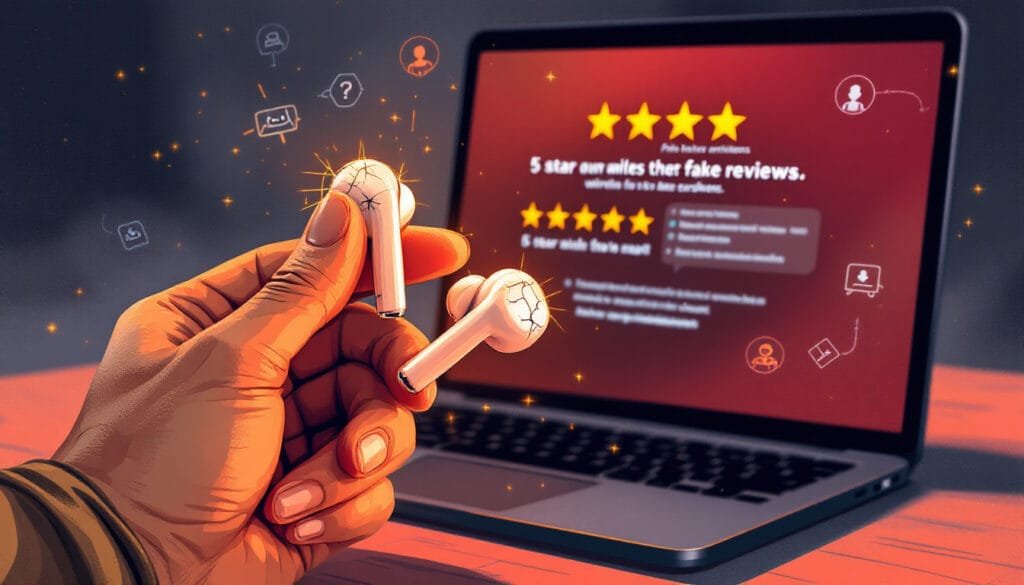
Picture this: you’re hunting for the perfect pair of wireless earbuds. One product boasts glowing reviews about crisp audio and exceptional battery life. But after purchase, you find the sound quality mediocre and the battery drains faster than it charges. What gives? You may have fallen victim to fake reviews.
These fabricated reviews manufacture false narratives around a product. They highlight non-existent features or exaggerate how well the product works. This leaves real users in the dust, as their feedback becomes harder to see amidst the noise of fake five-star ratings. Often, these counterfeit reviews come from bots, paid reviewers, or even sellers who are trying to inflate their product’s reputation. This makes it harder to identify genuine customer experiences.
According to a report by Harvard Business Review, fake reviews even manipulate product visibility by influencing algorithms that rank search results. Consequently, products with “padded” ratings gain more buyers, even if the quality isn’t there. Isn’t it unsettling how easily our buying decisions are steered in the wrong direction?
Impact on Emerging Tech Brands
Fake reviews don’t just hurt consumers—they can crush or unfairly promote tech startups fighting to stand out. Smaller or newer brands often rely on early, honest feedback to refine their products and grow organically. But in an unequal playing field plagued by fake reviews, things can get tricky.
For struggling startups, negative fake reviews can be devastating. Imagine launching a groundbreaking gadget, only to have bogus one-star reviews flood your product page. Suddenly, potential buyers are deterred, assuming your brand lacks credibility. Conversely, established competitors may exploit fake positive reviews to overshadow these smaller players, creating an artificial sense of trustworthiness.
The kicker? Fake reviews can skew competition in favor of those who cheat, making it an uphill battle for companies that want to do things the right way. A study discussed in Boast highlights how emerging brands are particularly vulnerable, as they often lack the resources to combat these misleading practices effectively.
Legal and Ethical Implications
The rise of fake reviews hasn’t gone unnoticed by regulators. In a push to clean up the review ecosystem, the Federal Trade Commission (FTC) has recently implemented rules prohibiting the creation, sale, or publication of fake reviews. The FTC Final Rule explicitly bans practices tied to fake consumer reviews and testimonials, aiming to safeguard both buyers and honest sellers.
What does this mean for businesses? Brands found guilty of manipulating reviews could face hefty fines and legal action, not to mention the hit to their reputation. And here’s the thing—fake reviews aren’t just a shady business tactic; they’re a violation of consumer trust. That trust, once gone, is hard to earn back.
Regulating this deception will take time. But steps like these are keeping companies accountable, forcing them to rethink practices that prioritize short-term gains over long-term transparency.
The problem of fake reviews looms large, with consequences felt by shoppers, small businesses, and even the tech industry as a whole. It’s more than just a nuisance—it’s a breach of trust that chips away at the foundation of informed decision-making. Legal efforts are promising, but the fight to separate fake vs. real reviews in tech is far from finished.
Key Traits of Fake Reviews
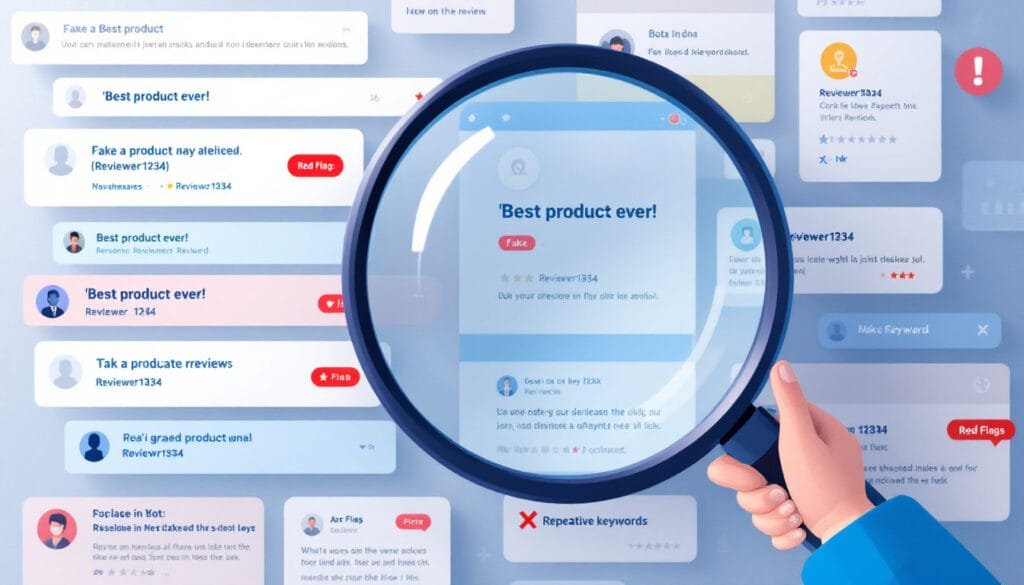
Fake reviews have become way too common and frustrating, particularly when we rely on them to determine which gadgets or tech to buy. While they might appear convincing at first glance, fake reviews often betray themselves through specific patterns—if you know what to watch for. Let’s break it down.
Overly Positive or Negative Language
Ever read a review that’s something like, “This product changed my life! It’s flawless and better than anything out there”? Or the opposite: “This is complete garbage, avoid at all costs!”? These are hallmarks of fake reviews. When someone is writing authentically, their feedback is typically balanced—they’ll share both the good and the bad.
Fake reviews, on the other hand, tend to exaggerate emotions. Positive fake reviews gush over a product in such a way that it feels like a sales pitch. Similarly, overly negative ones can feel vindictive or scripted. Genuine customers are rarely this extreme; they talk about practical experiences—what a product did well and where it fell short.
For example, ask yourself: does the review focus solely on grandiose statements without offering any specifics? That’s a good sign it isn’t real. Often these types of reviews are generated by bots or written by paid reviewers whose only goal is to sway opinions without having any firsthand experience.
For more tips on identifying this behavior, check resources like Joanne McCall’s guide, where she discusses why overly polarizing reviews are suspicious.
Repeating Keywords and Jargon

Another red flag: reviews stuffed with repeated product names or technical terms. Let’s say you’re researching a smartwatch, and you find reviews saying things like, “The XYZ Smartwatch Pro delivers exceptional comfort. The XYZ Smartwatch Pro exceptional GPS accuracy. XYZ Smartwatch Pro is truly the best smartwatch.” Feels robotic, right? That’s because it probably is.
This type of repetitive wording doesn’t occur in natural writing. Real users don’t feel the need to constantly restate the product name (or buzzwords) within a single review. Instead, they write how they’d explain it to a friend, focusing on usability, practical insights, and context.
Why does this happen? Fake review campaigns often prioritize SEO for the product being promoted, which is why you see the same phrase over and over. Automated tools aren’t great at mimicking human linguistic variety, so they resort to keyword repetition.
To explore how this works, check out Fakespot, a platform designed to analyze and flag suspicious review patterns. It’s particularly great for spotting reviews that seem way too focused on marketing buzzwords.
Reviewer Activity Patterns
This one’s a biggie. Even if the language of the review feels authentic, the profile of the reviewer tells another story. Fake reviewers often share specific traits that separate them from real users.
Common red flags include:
- One-time reviewers: If someone’s account is brand new and has only one or two reviews, there’s a good chance it was set up solely to leave fake feedback.
- High-volume activity in short bursts: Genuine users don’t write dozens of reviews in a single day, but fake accounts often do. They’ll flood review sections with multiple posts to manipulate product ratings quickly.
- Generic or unverified profiles: Accounts with no profile pictures, usernames like “Reviewer1234,” or a lack of any personal details are often fake.
Real reviewers have patterns that feel… well, human. They may review a variety of items over time, mixing long posts with short ones, and even adding opinions on unrelated subjects. Fake accounts are all about quantity over quality. Tools like PIRG’s guide suggest checking how consistent a reviewer’s activity is—it’s usually a dead giveaway.
By paying attention to these patterns, it becomes much easier to weed out misleading reviews as you navigate your tech purchases. Keep these signs in mind the next time you dive into those customer ratings!
How to Analyze and Identify Real Reviews
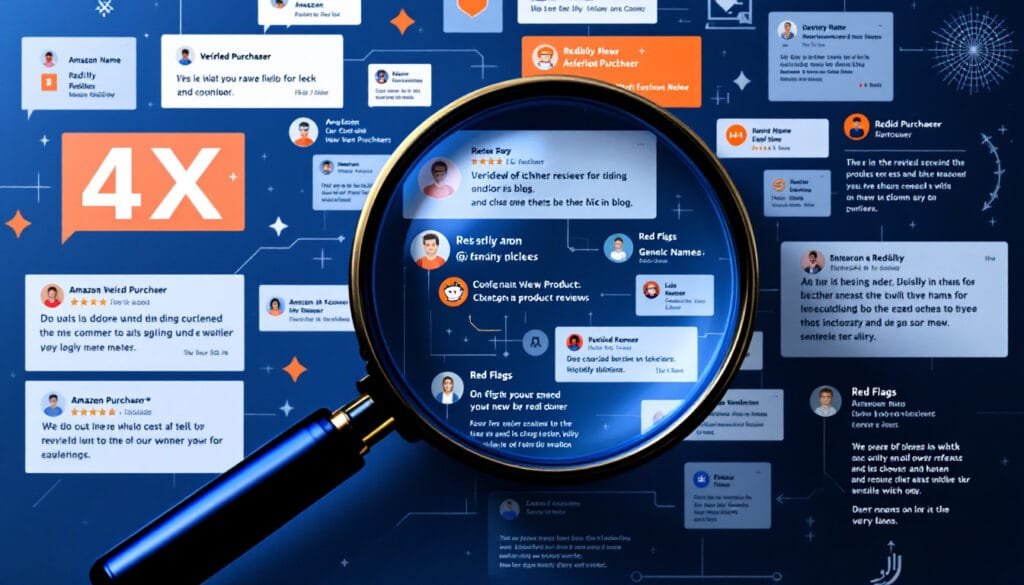
When I shop for tech products, reviews feel like the lifeblood of good decision-making—not just a resource, but a compass steering me toward quality. However, fake reviews can throw that compass off entirely, leaving you lost in a sea of misinformation. If you’ve ever wondered how to tell the authentic from the artificial, I’ve got you covered. Here are practical strategies for identifying genuine feedback and spotting fakes.
Cross-Referencing Multiple Platforms
Here’s the thing about fake reviews: even when they’re well-written, they rarely cover all the bases. A simple yet effective trick I use is checking reviews across multiple trustworthy platforms. Why? Because it’s much harder for fake reviews to be consistent everywhere.
For example, a product that’s drowning in glowing reviews on a single e-commerce site but gets poor feedback on forums like Reddit or niche tech blogs? That’s a red flag. Reliable products usually have well-rounded feedback across the board. I always compare reviews on platforms like Amazon, Best Buy, and even discussion threads with actual enthusiasts sharing their experiences. Tools like this article on sourcing reviews on multiple platforms can help you uncover diverse viewpoints.
When you cross-reference, imagine you’re assembling a puzzle: no single piece paints the whole picture, but together, they reveal the truth. Consistency is key here. If users are celebrating—or complaining about—the same thing on numerous platforms, it’s likely genuine feedback.
Look for Verified Purchases
Let’s be honest, not every review is coming from someone who has actually bought or used the product. That’s where “Verified Purchaser” tags come in—they’re like a trust stamp. Many e-commerce platforms like Amazon prominently display this status, confirming that the reviewer bought the item through their site.
But not all “verified” reviews are trustworthy. For instance, if you see too many suspiciously generic comments even under that label—like phrases such as “nice product” without much detail—it’s worth digging deeper. According to Amazon’s explanation of the Verified Purchase tag, this feature exists to filter out potentially dubious input. However, you still need to combine it with other cues to ensure authenticity.
For more transparency, I love platforms like Trustpilot, where verified reviews often come paired with transaction details or receipts. This added verification helps reinforce that a reviewer isn’t just talking the talk but has walked the walk, so to speak.
Study Reviewer Profiles
Real people leave traces of life in their online profiles. Whenever I question a review’s authenticity, a quick glance at the reviewer’s history often tells me everything I need to know.
Start by asking yourself a few questions: Does their profile show a healthy mix of reviews, both positive and negative, across a broad range of products? Or is it suspiciously one-dimensional—multiple glowing reviews for one brand in a short time? That’s a key indicator of potential fake activity. It’s also helpful to look out for profiles with generic names like “Reviewer123” and zero personal details.
Often, fake reviewers leave overly polished comments but neglect the human side—things like personal anecdotes or minor frustrations. Legit reviewers, in contrast, can’t help but sprinkle in those “it worked great, but…” touches. Research published by ScienceDirect highlights how reviewers with a clear, consistent footprint tend to inspire far more trust than those who seem noncommittal or oddly robotic in their activity patterns.
Evaluate Review Content
One of the quickest ways to spot truth from trash is by focusing on the content itself. Real reviews feel more like conversations; they explain, compare, and often come with a story. Fake ones? They’re often vague, repetitive, and either overly promotional or overly harsh.
Be Specific: Genuine reviews tend to talk about particulars that resonate with their real-world use—for instance, “The battery lasted longer than 12 hours, but the charging time was slow for me” instead of generic phrases like “great product, highly recommend.”
Balance Is Key: Nobody loves or hates everything about a product. Real users usually offer a balanced breakdown: what impressed them, what didn’t, and even areas of improvement. On the flip side, fake reviews often swing wildly one way or the other. They’re either drenched in positivity or riddled with negativity.
Grammatical Repetition: Fake reviews often repeat words or phrases, especially related to the product name. If someone mentions “XYZ Speaker 300” five times in one short review, that’s probably for SEO.
Finally, check for review timestamps. An unusual surge of positive reviews in a short time? That’s often a red flag for either review-buying schemes or bot activity. For more tips, this guide on reviewing content authenticity offers some insightful tips on spotting suspicious patterns.
Knowing how to separate fake reviews from authentic ones is a life skill in today’s tech-buying world. Combining these strategies—cross-referencing platforms, checking for verified purchases, studying profiles, and evaluating the content—will make your shopping decisions not only safer but smarter. There’s nothing quite like the confidence that comes from knowing you’ve done your homework.
Tools to Differentiate Between Fake and Real Reviews
Sifting through online reviews can feel like wading through a sea of opinions, with some being genuinely helpful and others glaringly misleading. If you’ve ever second-guessed the authenticity of a review, you’re not alone. The good news? There are specialized tools out there that make it easier to decipher fake reviews from real ones. These tools use advanced algorithms to scan for patterns and red flags, helping you make better purchasing decisions. Let me show you how they work and why they’re worth adding to your shopping arsenal.
Fakespot
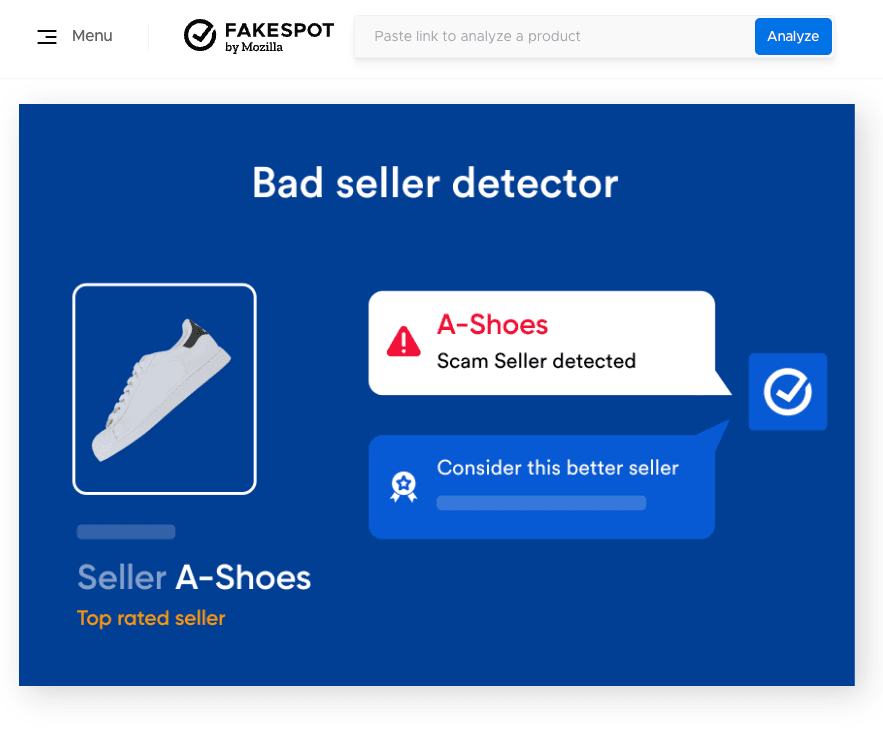
Fakespot Inc. has become one of the most trusted names in identifying fake reviews, and for good reason. It uses AI and advanced pattern recognition to analyze reviews for authenticity. Here’s how it works: you copy the URL of a product page, paste it into Fakespot’s platform, and it provides a detailed report on the review quality. It even assigns a grade, from A to F, to show how trustworthy the reviews are.
What makes it brilliant is how it examines subtle yet telling nuances, like repeated wording across reviews or reviewers with suspiciously high activity levels. It also flags sellers who engage in deceptive practices, like review manipulation, so you can steer clear of their products.
Accuracy-wise, It is highly reliable when it comes to major platforms like Amazon, Walmart, and Best Buy. It’s not just tech products either—it works for nearly any category. Keep in mind, it might not be perfect and, like any tool, works best as part of a broader strategy. Learn more about how this tool operates on their official website.
ReviewMeta
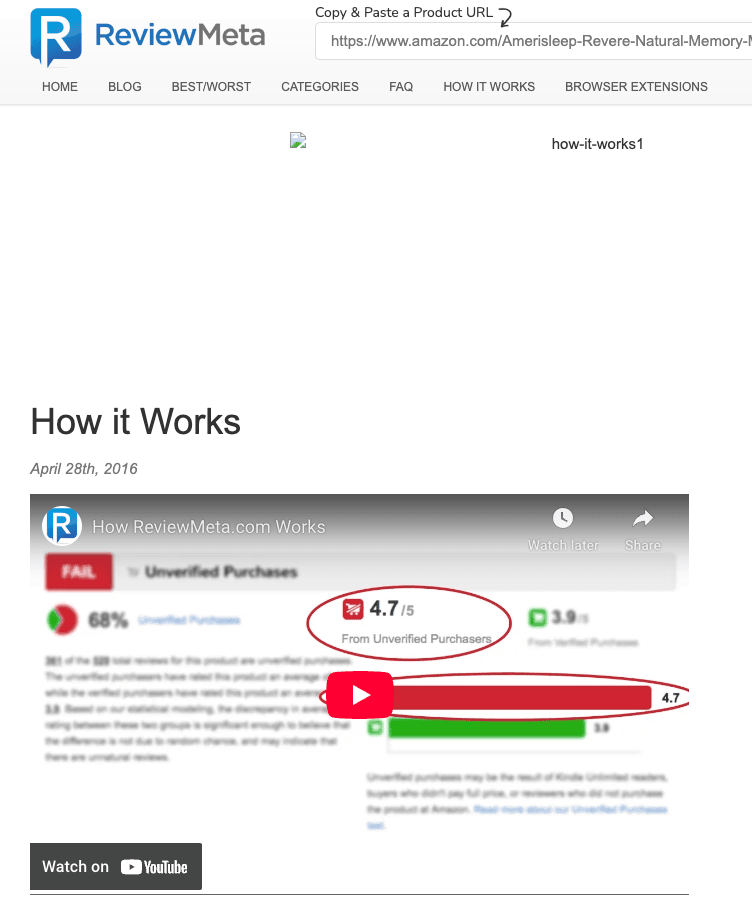
Another powerhouse in the review vetting space is ReviewMeta. If you’re an avid Amazon shopper, this tool is a lifesaver. Unlike Fakespot, which focuses on multiple sites, ReviewMeta is laser-focused on analyzing Amazon reviews. Its methodology is transparent, giving you a full breakdown of the algorithms used to filter out suspect reviews.
ReviewMeta identifies fake or biased feedback by digging into the numbers. It evaluates things like the proportion of one-time reviewers, review timing, and even overly positive language. The tool then recalculates the product’s ratings based on what it deems to be authentic reviews. This “Adjusted Rating” feature is perfect if you want a no-nonsense view of a product’s quality without all the fluff.
Although ReviewMeta’s scope is narrower, its precision makes it invaluable. It’s a must-have for anyone who relies on Amazon for their tech purchases. If you’re curious about how it works, check out ReviewMeta’s breakdown here.
Other Helpful Tools
Beyond Fakespot and ReviewMeta, there are several other resources that can help you spot fake reviews. These platforms might focus on different niches or offer unique features that can complement your review analysis journey.
- Google Trusted Reviews: Reviews verified by Google come with credibility. They focus on local businesses and apps tied to your Google account, ensuring more authenticity.
- Sentisum: If you’re managing reviews for your own business or digging deep into customer insights, this tool analyzes larger volumes of reviews for trends and sentiment. It’s not just about catching fakes—it helps with understanding market perceptions. Learn more here.
- Local Falcon: Particularly useful for small businesses, Local Falcon dives into local review analytics. It’s a great way to identify fake reviews on platforms like Google Reviews. Check out how it works here.
- AppFollow: This platform excels in analyzing app store reviews. Pairing AI with review history, it ensures you get a clearer picture of customer feedback on mobile platforms. More details can be found here.
- MetricsCart: Specializing in Amazon reviews, MetricsCart is a go-to for brand reputation monitoring and counterfeit detection. Dive deeper here.
Each tool has its strengths, so don’t hesitate to mix and match. After all, no tool alone is foolproof, but together they offer powerful insights to help weed out the fake from the authentic.
In an online world overflowing with reviews, these tools act as gatekeepers, guiding you toward trustworthy products and saving you from bad decisions. Whether you’re spending $20 or $200, having these resources in your corner can make all the difference.
Encouraging Transparency in the Tech Market
Transparency in the tech market isn’t just a buzzword—it’s a necessity for creating trust between businesses and consumers. When fake reviews infiltrate this space, they erode that trust, leaving both buyers and ethical companies at a disadvantage. The good news is that there are actionable steps businesses and governing bodies can take to encourage transparency and fight against fake reviews. Let’s break it down.
Company Accountability and Feedback Systems
Companies have a responsibility to set the tone when it comes to transparency. A big step in the right direction is creating robust feedback systems. Why? Because real user feedback—and acting on it—builds trust and encourages honest participation from customers. But how does accountability fit into this?
A few key practices stand out:
- Allow Verified Reviews Only: Businesses should aim to limit reviews to verified customers. Whether it’s linking reviews to receipts or using verified purchase filters, this ensures that reviews come from people with actual hands-on experience with the product.
- User Moderation Features: Giving customers the ability to upvote or flag reviews can naturally sift through misleading or irrelevant feedback. For example, Amazon’s “Was this helpful?” feature often pushes the most trusted reviews to the top.
- Encourage Balanced Reviews: Instead of fishing for only five-star ratings, companies should welcome mixed feedback—it’s more authentic. Openly responding to criticism can set an example of accountability. When a company fixes an issue based on a negative review, it’s a win-win scenario for everyone involved.
A proactive feedback loop also boosts a company’s credibility. An article by the Best Practice Institute highlights how incorporating real-time feedback mechanisms promotes not just transparency, but builds stronger consumer relationships. It’s proof that transparency can lead to both consumer trust and business growth.
Regulatory Roles in Reducing Fake Reviews
While companies have their part to play, government regulation is essential in creating a safer online environment. The Federal Trade Commission (FTC) has been leading this charge in the U.S., especially with recent rules banning fake reviews. But how exactly does regulation make a difference?
- Deterrence with Penalties: By imposing financial penalties on businesses that engage in manipulative behavior—such as purchasing fake reviews—the FTC sends a clear message that unethical practices won’t be tolerated. According to an article on CapTechU, these penalties discourage companies from risking short-term gains over long-term legal consequences.
- Monitoring Algorithms: Many government bodies are lobbying for greater oversight on platforms like Amazon and Yelp, where bad actors exploit review algorithms. These platforms, under scrutiny, are also being pushed to install stronger safeguards, such as AI tools to detect fake review patterns.
- Enforcing Transparency: Regulatory action doesn’t just stop at banning fake reviews. It extends to holding businesses more accountable by requiring better disclosure practices. For example, companies can no longer legally incentivize positive reviews without making that relationship public. The FTC’s Fake Review Ban is an excellent example of how these rules are structured.
When regulations align with strong corporate accountability, the result is a fairer market. It empowers consumers to make informed decisions and forces businesses to compete on genuine merits, not padding from inflations of false praise.
This synergy between company-led transparency initiatives and firm regulatory oversight gives us hope for a cleaner review ecosystem.
Conclusion

Knowing how to spot fake vs. real reviews is no longer optional—it’s essential for making smart tech purchases. Whether you’re eyeing the latest gadget or comparing specs, genuine reviews play a massive role in guiding your choices. The tips and tools outlined here can empower you to make informed decisions, saving you time, money, and headaches.
Start small. Apply these strategies next time you’re scrolling through reviews, and watch how much easier it becomes to uncover the truth. Let’s shift the power back to the informed shopper—because we all deserve transparency, especially in the fast-moving world of tech shopping. If you’ve got your own tricks for spotting fake reviews, share them below! The more we talk about this issue, the harder it becomes for fake reviews to thrive.
FAQ’s:
What are the most common red flags of fake reviews?
Watch for overly generic language, phrases like “best ever” or “worst product,” a flood of reviews in a short time, or repetition of similar wording across multiple posts. If the reviewer is oddly vague or overly emotional without specifics, that’s another red flag.
Why do companies use fake reviews, and how common is this practice?
Some companies use fake reviews to boost ratings, manipulate search algorithms, or bury negative feedback. It’s surprisingly common—enough that the FTC’s new rules aim to curb these practices with fines up to $51,744 per violation.
How can I tell if a review site or platform is trustworthy?
Look for platforms that use both algorithms and human moderation to combat fake reviews. Websites like Trustpilot or Google Reviews often reward authentic reviewers and allow consumers to interact, which adds transparency.
Can I trust reviews on social media platforms?
Not always. Social media reviews are particularly prone to manipulation since they’re less regulated. Watch for bots, duplicate comments, or influencers who might promote products due to paid partnerships (without clear disclosure).






